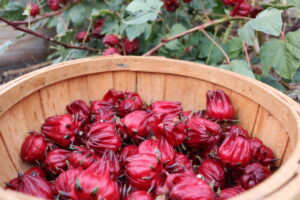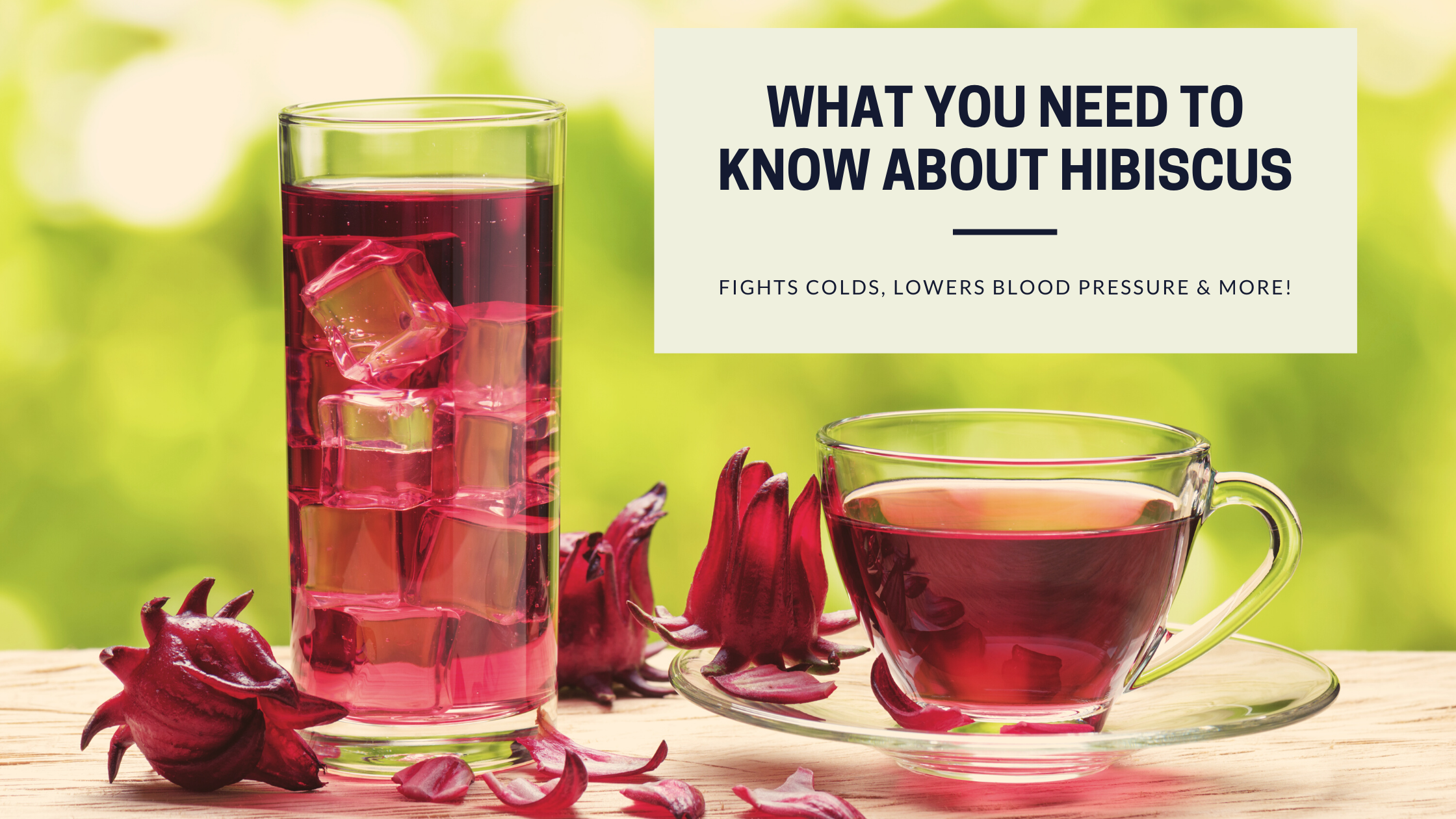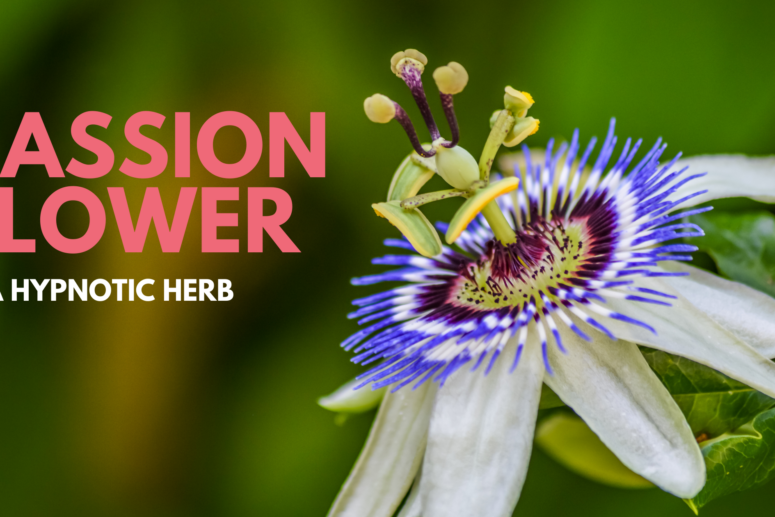I call it hibiscus. I recently learned it has many other names around the world including… karkade, red tea, Jamaica sorrel, roselle, and sour tea.
Whatever you call it, it’s a staple in my home, especially now with so many viruses and germs floating around.
Using it as a tea is supposed to have tons of health benefits including fighting a cold, lowering your blood pressure and cholesterol, it can even help with weight loss.
That’s why I add it to my tea every morning!
I love the red hibiscus variety! It’s called Hibiscus sabdariffa. Not only is it gorgeous but it’s filled with antioxidant and anticancer properties. That’s why the red flowers of this variety are most commonly used for medical purposes.
So let’s talk more about the benefits!
It contains Vitamin C and iron and as I mentioned, it’s a rich source of antioxidants. But what does that really mean?
Antioxidants help fight free radicals, which attacks your cells and raise your risk for disease.
It also helps reduce oxidative damage, which is known to exacerbate the aging process.
I don’t know about you, but if there’s a chance that one plant can help protect me from disease, strengthen my immune system, lower inflammation, AND reduce wrinkles, I’m sold! Did I say it’s also a delicious drink?

How to use it
One way to seep the benefits of hibiscus is by making hibiscus tea. It’s naturally caffeine-free. I found many articles online with several ways to use the flower for tea. I keep it simple; I drop three whole calyxes (pictured above) into my mug, add boiling water and let it steep for 10 minutes. I sweeten it with a little honey or stevia leaves from the garden. Once you’ve taken your calyxes from your tea glass, they are still useable for all sorts of things including relish.
Throughout the season, I dry the calyxes and leaves so I can have fresh tea all year long. Remember the whole plant is edible! So toss the leaves in your smoothies and salad. You can even sauté the leaves like spinach, although fresh will give you more benefits.
If you have a yummy recipe, I’d love to try it! Send us photos and recipes to our email and I’ll post them on our social media pages.
If you don’t have the honor of planting a hibiscus plant right now, you can still reap the benefits.
You’ll find supplements and teas at grocery stores and online.
- Do keep in mind; since hibiscus is supposed to lower your blood pressure and affect blood sugar levels, some suggest you stop using it at least two weeks before scheduled surgery. The idea is that since it affects your blood sugar, it could make it difficult to control during surgery.
How to grow it
Now you may be wondering – how can I grow this at home? Well, good news because hibiscus is fairly easy to grow, even here in the Arizona desert climate. This plant can take the high temperatures, but cannot withstand cold weather below freezing.
Hibiscus typically thrives best in full morning sun, with some afternoon shade.
While the temps are still nice, we water our hibiscus plants every other day. Once temps reach over 100 degrees, we move to daily watering.
Deep watering encourages the plant to develop deeper roots, making it tougher when the weather gets hot and dry. Some gardeners flood their beds for about 25 minutes in order to saturate the soil.
March is the ideal time to plant your own hibiscus seeds here in Phoenix. Roselle hibiscus is what we plant. It germinates at soil temperatures between 75°- 85°F, and does well directly sown in the garden.
Dig a hole about 1 foot deep and 2 feet wide in moist soil. The roots need lots of room and the plant can get at least 4 feet wide so if you are planting more than one, give them some space. The branches can get heavy so you may want to use stakes for support, but our plants are fine without.
Next fill the hole with a mix of compost and soil, then plant your seeds about one centimeter deep before covering them with soil.
Keep the soil moist in order for the seeds to germinate.
For healthy upkeep of your hibiscus, try using compost as a fertilizer!
We add worm tea to our plants about once every two weeks.
Don’t get too anxious. It takes about six months to mature so don’t expect to harvest until fall. But trust me, it is totally worth the wait.
One of the best parts about hibiscus is it comes back every year.
We planted our plant years ago and I haven’t had to plant since.
In fact we have several volunteer plants throughout the yard and we harvest lots of seeds every season
So if you’re still looking for Roselle hibiscus seeds, check out the GreenDesertLifestyle Etsy shop!




